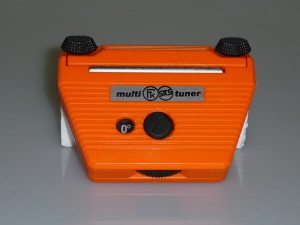How to Choose an Edge Bevel Tool
If you’re new to tuning the broad selection of tools and waxes can be baffling and bevel tools are no exception.
As you likely know, a ski or snowboard has two sides to an edge, the side…er…side and the base side. Both need to be maintained. To ensure angle accuracy along the entire length of the edge it is best to use a bevel guide. I once worked with an Australian who tuned skis freehand, no guide, he claimed he could “feel” the angle…he also swore his dog drove him home from the bar one night. Until your dog starts driving, probably best to stick with a guide.
There are two tool approaches to beveling ski or snowboard edges.
A bevel device is a tool with a plastic or metal body that can accept small file or stone inserts. Most will also have an adjustment knob to set your desired bevel angle. They are convenient, easy to use and provide precise results even for less-than-attentive or skilled tuners. Some models address both the side and base edges eliminating the need for two separate guides. The file and stone selection for these devices is fairly wide. Disadvantages include more frequent file and stone cleaning or replacement (since file inserts are small and wear faster) and less “feel” for the cutting action of the files since your fingers usually can’t touch the file. They are a great choice for families with multiple pairs of skis to tune, travelers, folks just getting started or those who don’t want to spend all night in the garage tuning.

Example of an adjustable bevel device.
A side bevel guide looks somewhat like a piece of angle-iron, it slides along the base and holds the file or stone at a specific angle to the side edge. A base bevel guide slides along the base perpendicular to the edge and holds the file or stone at a specific angle to the base edge. Most any size file, diamond stone or aluminum oxide stone can be securely clamped or set in these guides. Their advantage is flexibility (use ’em with whatever favorite file or stone you prefer), longer file life (since files are larger and you can utilize their full cutting surface), and greater cutting sensitivity (since your fingers are usually in direct contact with the file itself instead of a plastic or metal tool body). Downside? They require greater attentiveness and skill, plus many bevel guides (but not all) are sold in degree-specific models…meaning you need different guides for different bevel angles. You’ll also need two, one for the base edges and another for the side edges. These are a good choice for more experienced tuners looking for flexibility, ultimate precision and don’t mind spending an extra bit of time at the bench.

Example of a side bevel guide.

Example of a base bevel guide.
That’s it in a nutshell, hope it helps!
 Default Currency
Default Currency
 Australia
Australia
 New Zealand
New Zealand
 European Union
European Union
 Canadian Dollar
Canadian Dollar